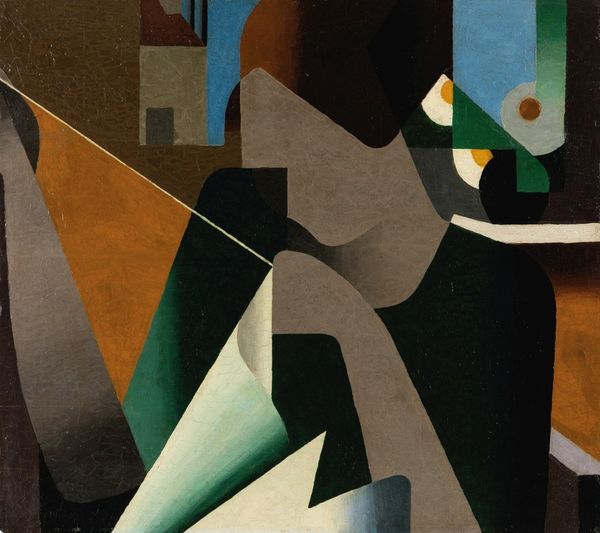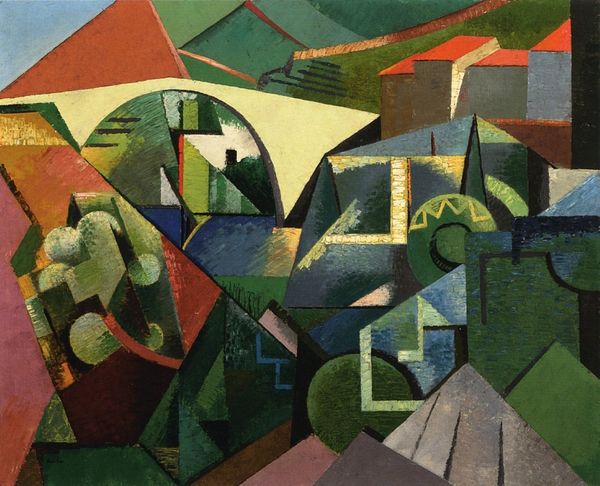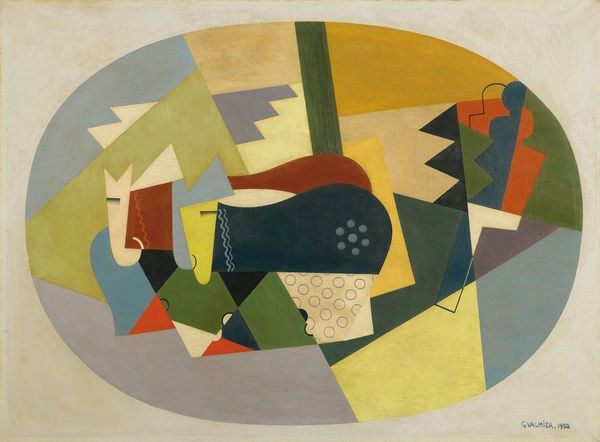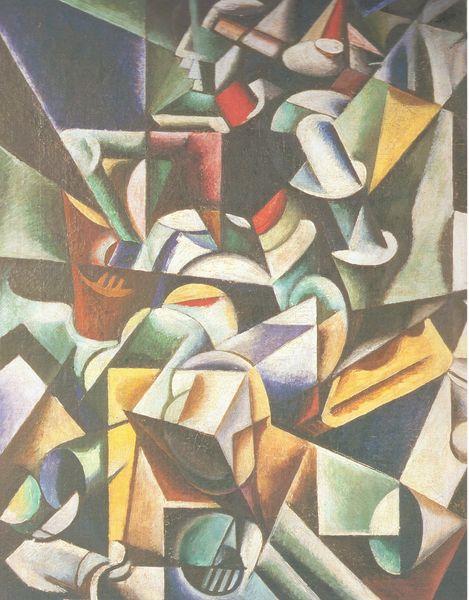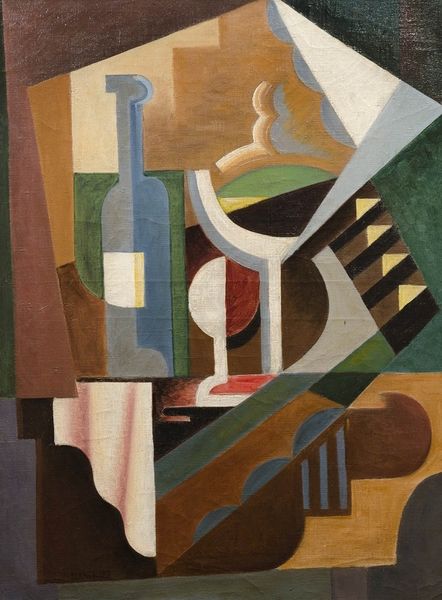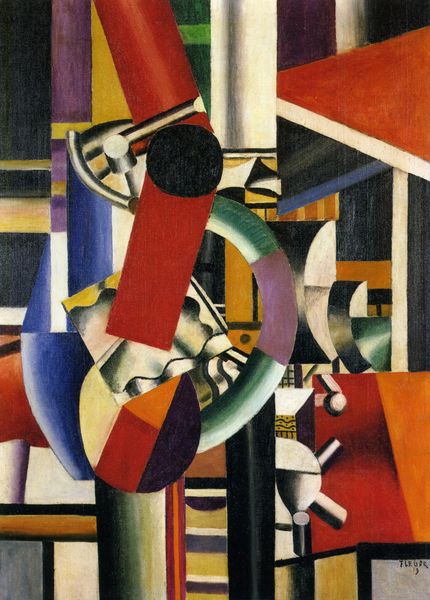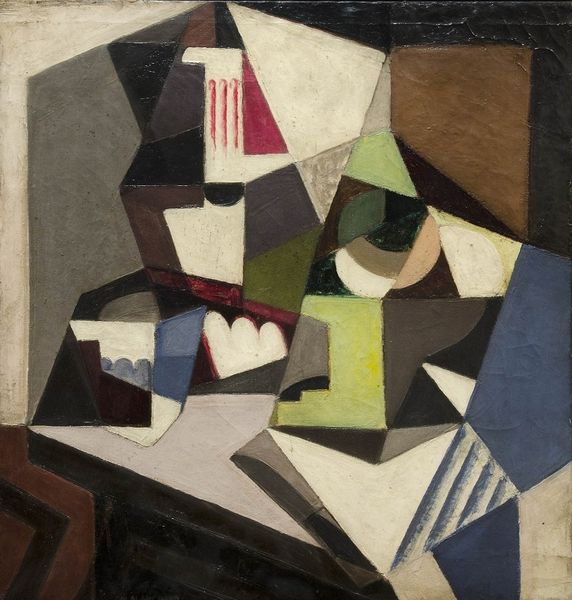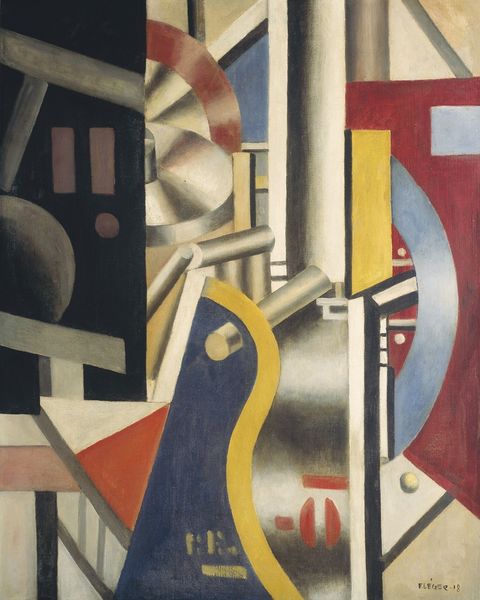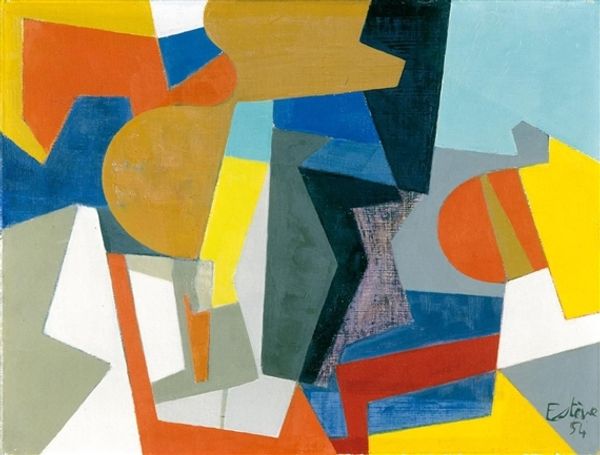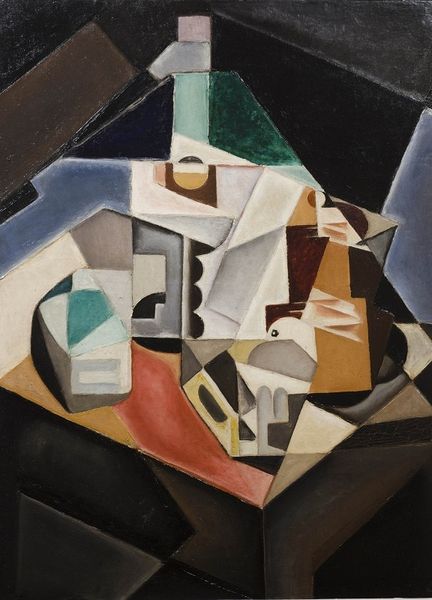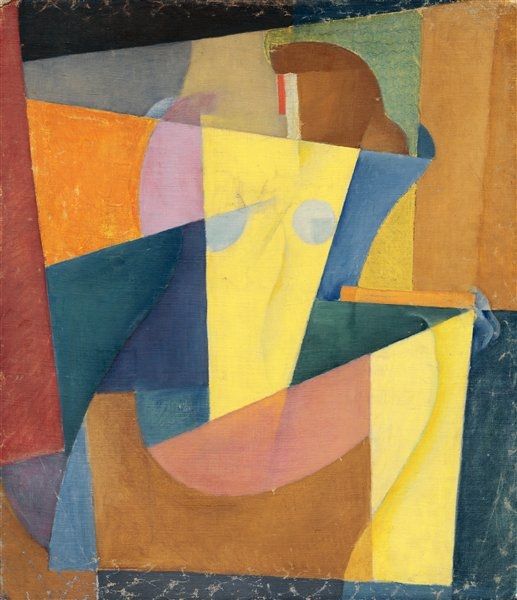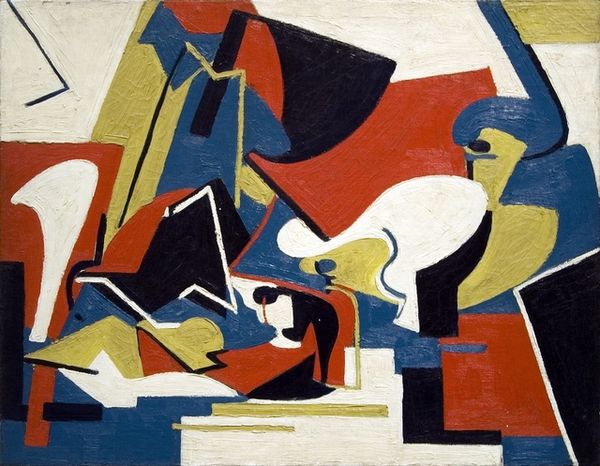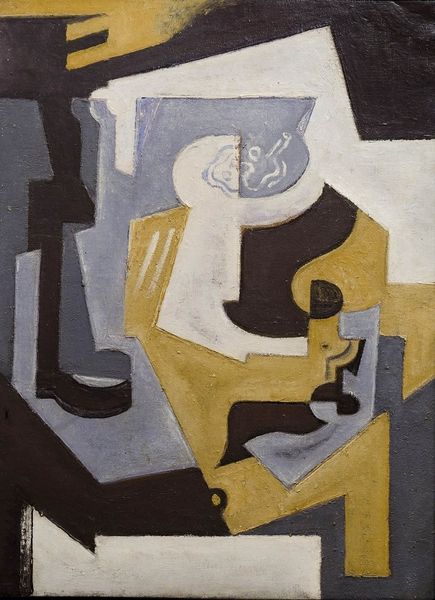
painting, oil-paint
#
cubism
#
abstract painting
#
painting
#
oil-paint
#
abstract
#
oil painting
#
geometric
#
abstraction
Copyright: Public Domain: Artvee
Curator: Juan Gris created this oil on canvas, titled "Glass and Checkerboard," around 1917. It's a fascinating example of his Cubist style. Editor: It hits you immediately with its stark, geometric arrangement. A rather muted palette contributes to the somber mood. But within the fragmented shapes, there is some attempt at realism: the shapes are reminiscent of objects like the titular glass and chessboard, creating some tension. Curator: The objects—glass, chessboard—they become symbols. Gris reduces reality to its essential forms, much like ancient iconographers simplified figures to amplify their spiritual weight. A glass might symbolize fragility, but rendered here, it feels strangely resilient, an almost defiant act in a time of war. Editor: Interesting. I'm drawn to the structure itself, the way Gris plays with positive and negative space. The eye bounces between forms. Take the lower right quadrant for instance, the interpenetrating planes of the checkerboard invite you to play a compositional game. There’s something very clever happening on the surface. Curator: Exactly. The checkerboard is not just a pattern; it’s a symbolic arena, a battleground of color and shape that is reminiscent of its symbolic power. And that muted palette? These are the colors of Europe during and after the war: somber, reflecting a continent in recovery. Editor: Do you think it's intentional, this feeling of recovery, or more of a response to artistic problems that the movement offered, such as breaking down representation? I mean, for example, what is one to do with the checkerboard in Cubism other than to fracture it as if it were just another geometrical challenge? Curator: The intent behind Cubism cannot always be reduced to objective intention. Artists are creatures of both the seen and unseen realities. I read his subtle arrangement as intentional, yes, however Cubism provided an apt language for him. The overlapping of experience in art became like a tool for dealing with an unprecedented and overlapping experience in real life. Editor: So, seeing the work with fresh eyes through Gris' experience provides a new angle. What looked simply constructed moments ago can instead evoke cultural memory and continuity through fragmentation. Curator: Precisely. It is not merely about the abstract; it is how those abstractions engage with our shared symbolic understanding. Editor: Right, I get that. What at first seems like cold, detached formalism gains depth. A potent demonstration of how structure carries significance.
Comments
No comments
Be the first to comment and join the conversation on the ultimate creative platform.
